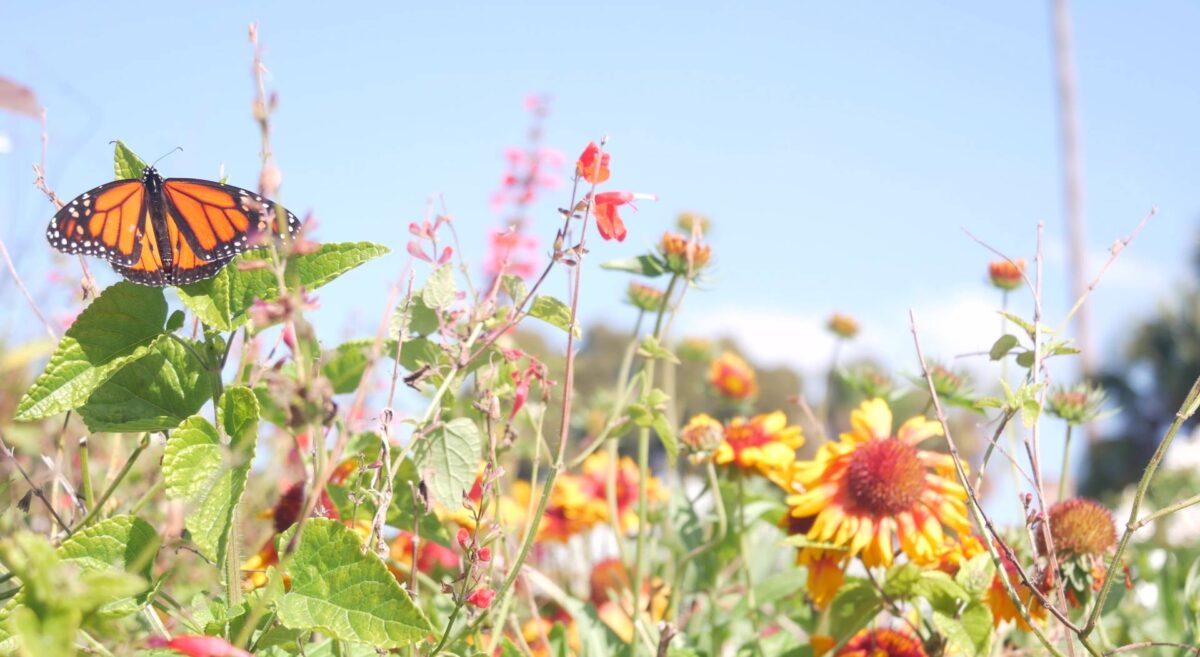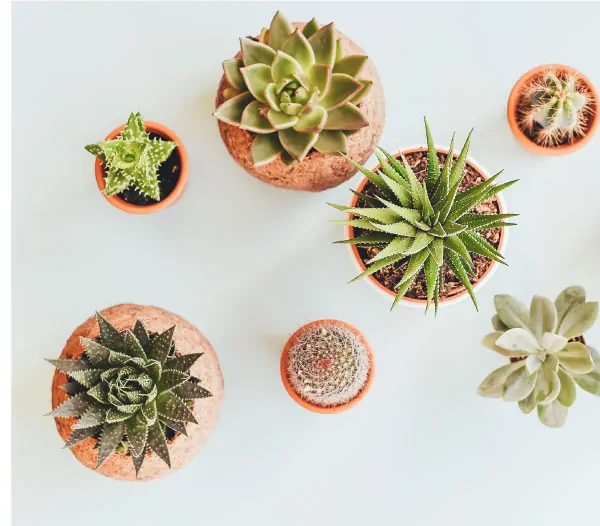Adding native wildflowers may give a special feeling of freshness to your yard. Transplanting these beautiful wildflowers enhances the aesthetics of your space while preserving the local biodiversity of the region. Moreover, the native perennials also serve as a source of food and shelter for essential pollinators such as birds and bees. This is particularly good for maintaining a balanced ecosystem in your yard and beyond.
Utah and the American West’s native wildflowers are undoubtedly a display of natural beauty.
Not only that, they also play an important role in sustaining local ecosystems. The native wildflowers of Utah have adapted over time to specific soil conditions, climate, and other wildlife of the region which makes them very well suited to survive the unique climate of Utah.
The process of growing native wildflowers in your garden involves a series of steps such as getting the seeds, tossing them onto the grass, preparing the soil according to the plant, and hoping that you would see a beautiful baby plant in a few days.
How to Find Suitable Native Utah Wildflowers
Because of the vast amount of wildflowers species, it can be really hard to find a suitable native Utah wildflower to transport to your yard. One of the first things to do is to seek a better understanding of the local climate. From colder mountainous areas to arid desert regions, Utah experiences a wide range of climates. Under these circumstances, a few things that are required to be researched include the length of the growing season in your location, average annual rainfall, and temperature fluctuations.
You’re also expected to study the soil conditions in Utah. The fact is, soil composition in Utah varies significantly from one region to another. To study the condition of the soil in your yard, you need to conduct thorough research on the nutrient content of the soil, pH level, and drainage properties. In addition, to transplant native wildflowers in your yard, you have to match the soil conditions in your yard with the soil conditions of the original site of the plant.
Moreover, you can identify the suitable native species of Utah wildflowers by consulting some reputable local resources such as native botanical gardens, or plant nurseries. They can guide you with valuable information related to native species that are well-suited for your particular region.
You can also join local hiking groups that focused on field trips to wildflower observation. Doing this will widen your knowledge and guarantee your expertise in locating and identifying different wildflowers in Utah.
Where to Find Native Utah Wildflowers
You can find native Utah wildflowers suitable for transplantation in several places including, Native plant societies, Botanical gardens, and arboretums, Native plant nurseries, Public or Private lands, and other conservation organizations. Although, these places have several regulations and policies you must follow alongside relevant information you might need.
The first on the list is the Utah Native Plant Society which is an organization that is responsible for the preservation, conservation, and appreciation of Utah native plant species. This organization consists of a network of plant experts, fellow enthusiasts, and other resources that preserve and promote native plant species. Moreover, UNPS is a sure plug to find relevant information and answers to difficult questions on Utah wildflowers.
Another preferable option to find Utah wildflowers is through native plant nurseries. The best thing is, you will see staff that will guide you regarding which wildflower species would be best suited for your yard. Moreover, you can also visit a botanical garden where you get a chance to learn about plant characteristics and observe the native plant varieties in their natural habitat.
Additionally, instead of visiting the aforementioned, you may find native Utah wildflowers grown on some private land in the region. But make sure to take permission from the owner of the land before collecting any plant species from private land. Also, there are several wildflowers sites on public lands including, Zion National Park, Bryce Canyon National Park, Uinta Mountains, and others.
How to Collect Native Utah Wildflowers From Public Lands
As mentioned above, native wildflowers can be found in several sites in Utah including Tony Grove, Albion Basin, and others. However, these sites are managed by a diverse group of agencies including, the Utah Division of Natural Resources State Parks, Utah Division of Wildlife Resources, the United States Department of Agriculture, and others.
Below are step by step process on how to collect native Utah wildflowers including some basic regulations and requirements you must follow:
- Get Permit
The first thing to do on any sites you want to get your native wildflowers is to get an authorized permit, which might cost you, $5,$10, or $20 depending on the management agencies. Most of these permits are good for a year.
- Get Common Species
Focus on collecting common species and not endangered ones. You have to identify the target species properly so that taking care of them would not be a hassle.
- Consider The Ideal Time
You need to consider the ideal time for native wildflowers collection to prevent any casualties. However, the time for each species collection varies, but the plants must be collected when they’re dormant.
- Make Use Of Tools And Equipment
To handle the plants correctly while digging out of the soil, you have to make use of the necessary tools and materials needed. Dig the plant out gently without disrupting the root system, but if it’s located in a rocky area, you have to cut the roots that are too deep to dig.
- Ensure Proper Preservation Of The Plants
When collecting transplants, it is a good idea to keep the plant moist to prevent drying out and allow access to oxygen until they can be transplanted to the landscape. Therefore, you have to put the plant in a pot with a temporary potting mix.
How to prepare your yard for transplantation
The fact is, you don’t just transport new plants to your yard without proper preparation to ensure the survival of the plants. Therefore, to prepare your yard for transporting native Utah wildflowers, you have to check the drainage of the site, and observe how efficiently the water is drained or absorbed.
For transplanting native Utah wildflowers, it is important to select a site with good drainage properties because excessive moisture can be harmful to transplanted wildflowers. Moreover, make sure there is proper spacing between the plants to promote healthy growth. Also, select a location that receives full or partial sunlight throughout the day.
Additionally, get rid of any large rocks or stones as they may interfere with the girth of the wildflowers. Remove weeds from the site to minimize the competition for nutrients. Furthermore,
remove debris such as fallen leaves or branches to provide a clean space for the transplanted wildflowers.
Lastly, you need to prepare the soil in your yard according to the requirements of the wildflowers. For this purpose, conduct a soil test to learn about the soil’s pH level and nutrient content so that you may make any changes if required. You may require to add organic matter to the soil, such as compost, to improve the fertility and structure of the soil. In addition, make sure to loosen the soil to ensure good aeration.
Native Utah Wildflowers Suitable for Transplantation
Some native Utah wildflowers that can be well suited for transplantation in your yard are as follows:
- Scarlet Gilia
Scarlet Gilia is scientifically known as Ipomopsis aggregate. It consists of clusters of red-colored tubular flowers. This specie of Utah wildflowers thrives in well-drained soil and is suitable for dry meadows and slopes.
- Blue Flax
The scientific name of Blue Flax is Linum lewisii. This plant contains delicate blue flowers. This specie of wildflowers is drought tolerant, therefore it is well suited for sandy or gravelly soils.
- Showy Milkweed
Showy Milkweed is scientifically termed Asclepias speciosa. It contains clusters of pink flowers. This species prefers well-drained soil and full sun.
- Lupine
The scientific name of Lupine is Lupinus spp. This specie of Utah wildflowers contain spikes of colorful flowers and possess nitrogen-fixing properties. It thrives in well-drained soil.
- Rocky Mountain Bee plant
The Rocky Mountain Bee plant or Cleome serrulata contains vibrant pink flowers that prefer to grow in well-drained soil and full sun.
- Penstemon
Penstemon, scientifically known as Penstemon spp contains showy flowers in a variety of colors. These wildflowers are drought tolerant and well-suited for well-drained and rocky soils.
- Globe Mallow
The scientific name of Globe Mallow is Sphaeralcea spp. They contain pink or orange flowers. This species thrives in dry and sandy soil. It is also drought-tolerant.
- Firecracker Penstemon
Scientifically known as Penstemon eatonii, Firecracker Penstemon contains bright red tubular flowers which are well suited for rocky yards.
- Western Coneflower
Western coneflower is scientifically known as Rudbeckia occidentalis. This plant consists of yellow to green colored flowers and dark-colored cones. This native species can tolerate a wide range of soil conditions.
- Evening Primrose
The scientific name of this plant specie is Oenthera spp. It has bright yellow flowers. This specie of native Utah wildflowers can adapt to a variety of soil types.
Apart from adding beauty to your yard, these native Utah wildflower perennials also serve as sources of food and habitat for local pollinators and wildlife.
Tips for Maintenance and Long-Term Care
Once you have transplanted native Utah wildflowers to your yard, now it’s your responsibility to ensure their health and longevity through proper maintenance and long-term care. To take care of these transplanted wildflowers, follow these tips:
- Provide your wildflowers with regular watering, especially during the phase of establishment so that the plant develops a strong root system. Make sure to avoid over-watering.
- Use mulching material such as straw, shredded leaves, and wood chips around the base of the plants to help suppress weed growth, retain moisture, and regulate the temperature of the soil.
- Weeds compete with plants for nutrients, water, and sunlight. Therefore, regular inspection of plant areas for the removal of weeds is necessary.
- Apply organic fertilizers to the soil during the growing season. However, native Utah wildflowers do not require heavy fertilization.
- Perform occasional pruning to maintain a tidy and compact appearance. Pruning is usually required to overgrown or back leggy stems.
- To encourage continuous blooming of the wildflowers, deadhead spent flowers to redirect the plant’s energy towards new flowering and growth.
- Regularly look for the signs of diseases or pests. Native Utah wildflowers are normally resistant to pests. If necessary, use organic methods of pest control, such as planting medicinal shrubs.
- Native Utah wildflowers may require some physical support as they grow. For this purpose, install trellis or stakes to prevent bending and breaking of stems, thus providing stability.
Your transplanted native Utah wildflowers require regular inspection for any signs of nutrient deficiencies, changes in growth patterns, or stress. It’s your job to address any issues to ensure the health and vitality of these beautiful wildflowers.
Conclusion
Transplanting native Utah wildflowers into your yard undoubtedly adds a glimpse of beauty to your yard. Not only that, it also acts as a supporting habitat for pollinators like bees, and birds, and for the surrounding wildlife. It is important to consider the local climate, and soil conditions, and prepare your yard according to the native Utah wildflowers to ensure their proper health and survival. One of the most important things is choosing the right wildflowers that can thrive in the conditions of the site of transplantation.
Once transplantation is done, it is necessary to take care of these plants by monitoring them and watering them regularly. By following these steps, you will be able to sustain a beautiful landscape that will be beneficial for both, your yard, as well as the surrounding nature.
Last but not least, talking to local gardening professionals and communities can yield insightful information based on their knowledge of native wildflowers in Utah. Never be afraid to ask for advice or provide expertise to other enthusiasts.




